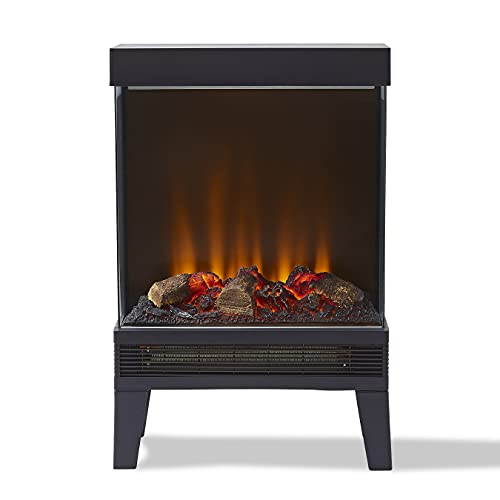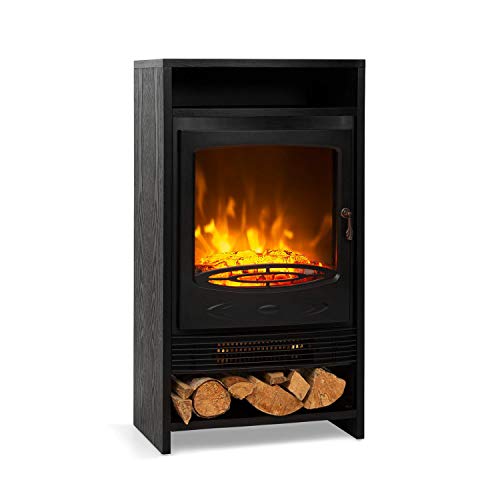What NOT To Do When It Comes To The Wood Burner Fireplace Industry
페이지 정보

본문
 How to Get the Most From a Wood Burner Fireplace
How to Get the Most From a Wood Burner Fireplace Unlike traditional open fireplaces wood stoves are specifically designed and optimized to burn firewood. This allows them to meet stricter emission regulations.
Unlike traditional open fireplaces wood stoves are specifically designed and optimized to burn firewood. This allows them to meet stricter emission regulations.Wood burning stoves are renowned for their glowing yellow flames, cozy crackling sounds and that primal sensation of warmth. The smoke produced contains toxic air pollutants like formaldehyde, benzene, and polycyclic aromatic hydrocarbons.
Efficient
Fireplaces and stoves made of wood are not just stunning, but they are also incredibly efficient. A quality wood stove can attain an Ecodesign rating of as high as 77%. It is crucial to get the most benefit of your wood burner, especially with increasing energy costs. The good thing is that it's now easier than ever before to do!
One of the most important factors in how effective a wood burning stove is is the water content of the wood. We recommend using only dried and seasoned wood that has dried over a period of at least one year, and in some cases, two years. The dryer the wood is the more efficiently it burns which means less smoke and less harmful emissions.
Another advantage of a wood burning stove is that it's a low carbon source of fuel, which is great for the environment. Furthermore, by buying locally-sourced firewood, you're helping to support the active management of woodlands which is a good option for wildlife.
In terms of maintenance concerned, the only requirement for a wood burner is to regularly remove and scoop up the ash. It can be somewhat of a hassle however it is worth it to get the maximum heat from each log. Additionally that if you wait a couple of days for the ashes to fully cool, they can be reused as a non-toxic and eco-friendly ice melt. They can be used to polish jewelry and absorb odors.
A wood burner fireplace stove (you could try these out) is a truly timeless classic. Although they're less popular than gas fireplaces, there is no denying the beauty and enthralling sound of a roaring log fire. They're great for snuggling up to on cold nights and are a perfect way to create an inviting and warm space inside your home. Making the investment in a top-quality wood burner will pay off for many years. Contact us today to find out more about how our experienced chimney sweeps can assist you in getting the most out of your stove.
Low Carbon
Wood burners that burn efficiently and cleanly are the most efficient way to save money while keeping your house warm. As an added benefit they can also assist in local woodland management, a fantastic way to support the wildlife that lives in your local environment.
If properly maintained, wood-burning fireplaces and stoves emit little or no pollution when they are operated with seasoned and dry firewood. If they aren't properly maintained or use wood of poor quality, the smoke that is produced contains fine particles, commonly referred to as particulate pollution, which can irritate lung organs and other body organs. It also contains carbon monoxide and harmful air pollutants such as formaldehyde, benzene, and polycyclic aromatic hydrocarbons. Inhaling this kind of air pollution can cause irritation of the lungs as well as wheezing, coughing, and asthma attacks and may even cause serious health issues such as cancer, heart disease, or premature death.
Some people worry that using a wood-burning stove can cause climate change however this isn't necessarily true. Burning wood is a carbon neutral energy source. The tree absorbs carbon dioxide over its lifespan. When burned carbon dioxide is released into the atmosphere.
The wood is sourced locally, which reduces the amount of pollution released during transportation. It is important to use hardwoods that are well-seasoned and of high quality. They will burn longer and more evenly than softwoods.
Modern, EPA certified wood fireplaces stoves and heaters (such as those manufactured by Charlton & Jenrick) have much lower emissions than older stoves. They have been certified to meet 2020 EPA standards, which are considerably stricter than previous emission limits.
To avoid the buildup of exhaust within your home, all wood-burning stoves should be vented fully to the outside. All of our current DEFRA-exempt, clean burn stoves can produce very clear exhaust by keeping the flames above the wood logs and by using dry, seasoned firewood.
A wood-burning stove equipped with a catalytic converter can provide the best low carbon heating solution. These units ignite gasses and particles released from the initial burning in a subsequent phase by mixing them with superheated air. They then funnel the remaining particulates and gasses through a catalytic combustion combustor for a third and final combustion, further reducing emissions to a level much lower than the standards set by the government.
Clean Burn
Cleanburn wood stoves burn fuel at the highest efficiency possible. This results in minimal dust emissions into the atmosphere when burning wood. The air management system of the stove controls the intake and venting of gases, ensuring that the combustion process takes place in a controlled and sealed environment. It also regulates flame height to maximise heat output and minimise emissions.
This means your chimney and its surroundings will be cleaner than older stoves. Particulate matter, also known as particle pollution, is a result of incompletely burned wood can trigger respiratory problems, such as coughing and wheezing. It can also contribute to heart disease as well as stroke, diabetes and other serious illnesses. The smoke from wood combustion is an important factor in poor air quality in urban areas.
Smoke from poorly burned timber has fine particulate pollution and harmful air pollutants such as carbon monoxide and other hazardous air pollutants like nitrogen oxides and volatile organic compounds (VOCs) as well as benzene and formaldehyde. These particles can be absorbed into the lungs, as well as other organs causing discomfort, harm, and even death. Airborne dust can also contaminate the surfaces of your home and create an unpleasant sludge-like feel to rooms.
When you are using a fireplace that is wood-burning it is essential to make use of high-quality firewood that has been properly seasoned and dried. Hardwoods like oak, ash, and beech are the best for heating. Hardwoods have a high density and BTU content, and they provide more heat than softwoods.
You should also check whether your local authority has any regulations regarding wood burning. These may include nuisance/odor rules and visible emissions, or the opacity limit for smoke.
If you have a wood burner with a glass door it is essential to keep the glass clear of grime and deposits. This can be done with a dry cloth or oven cleaner spray. You can also add bicarbonate of soda mixed with a small amount of water to the glass.
Regular maintenance of your stove and chimney is also vital. This includes regular chimney cleanings to eliminate creosote and ensure the proper functioning of your flue. It is also important to mark the dates of your periodic inspections on your calendar. This will help you to avoid costly repairs and prolong the life of your wood stove.
Low Maintenance
Many people choose to install wood-burning fireplaces due to the natural warmth they generate. This kind of fireplace needs some maintenance and upkeep. If not cleaned and maintained regularly, the chimney, flue and stove could have the potential to cause fires within your home. These fireplaces are also an excellent source of warmth when power is out, especially during winter when snowstorms can cause branches to fall from trees and rip up power lines.
If you use a wood stove to heat your home, you can reduce your carbon footprint as compared to other fossil sources of energy like gas. Modern wood stoves and inserts have been designed to conform to EPA (Environmental Protection Agency) standards which mean they produce very low emissions. The more well-seasoned wood you use, the more efficient the stove will be. You'll require less wood to achieve the same heat.
The fireplaces need some maintenance and care. They should be placed away from materials that ignite and have a screen installed. The flow of air will be improved by keeping the grate clear of ash and debris. This will keep the fire burning longer and your home tidy. It is recommended that your chimney and stove cleaned at least two times per year to avoid creosote accumulation that could create fire hazards or blockage and hinder ventilation.
It can take a while for a new homeowner to master the art of to ignite, light and maintain a steady fire in the fireplace suites. Once you've learned the art of lighting, your wood burning stove will be a source for warmth and comfort in your home.
Fireplaces that burn wood have been in use in some form or another for over 500 years and have rediscovered their popularity due to their energy efficiency, sustainability, and the natural warmth and aroma of real wood. Talk with your local Regency dealer about the benefits of wood stoves or inserts for your home if you're planning to buy a new heater.
- 이전글You Can Explain Mental Health Assessment Uk To Your Mom 24.09.22
- 다음글The One Assessment For Mental Health Trick Every Person Should Learn 24.09.22
댓글목록
등록된 댓글이 없습니다.
